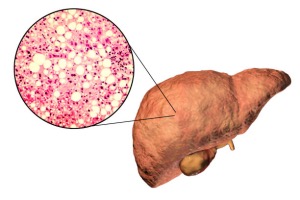Understanding Fatty Liver
—–Dr Deepika Kohli
Today I am sharing an article by Dr Deepika Kohli on Understanding Fatty Liver. Dr. Kohli is a Joint Secretary of WOW India and a well-known Dietitian/Nutritionist in Mayur Vihar Ph-I, Delhi and has an experience of 26 years in this field. Ms. Deepika Kohli practices at Deepika’s Diet Clinic in Mayur Vihar Ph-I, Delhi, Jeevan Anmol Hospital in Mayur Vihar Ph-I, Delhi and Life Care Centre in Preet Vihar, Delhi. She is a Certified Diabetes Educator ) from Pfizer in 2011. She is a member of Indian Dietetic Association. Some of the services provided by the doctor are: Diabetic diet, PCOD Diet, Weight Gain Diet Counselling, Therapeutic Diet’s and Weight Loss Diet Counselling etc. Must read… Dr. Purnima Sharma, Secretary General & Editor of WOW Website…
Understanding Fatty Liver
Causes, Symptoms, and Management
Fatty liver, also known as hepatic steatosis, is a condition characterized by the accumulation of fat in the liver cells. While a small amount of fat in the liver is normal, excessive fat build-up can lead to inflammation and liver damage. Fatty liver can be categorized into two main types: alcoholic fatty liver disease (AFLD) and non-alcoholic fatty liver disease (NAFLD).
liver cells. While a small amount of fat in the liver is normal, excessive fat build-up can lead to inflammation and liver damage. Fatty liver can be categorized into two main types: alcoholic fatty liver disease (AFLD) and non-alcoholic fatty liver disease (NAFLD).
*Non-Alcoholic Fatty Liver Disease (NAFLD)**
NAFLD is the most common form of fatty liver and is not related to excessive alcohol consumption. It often occurs in individuals who are overweight or obese, have type 2 diabetes, or have metabolic syndrome. NAFLD encompasses a spectrum of liver conditions, ranging from simple fatty liver (steatosis) to non-alcoholic steatohepatitis (NASH), which involves inflammation and liver cell damage. If left untreated, NASH can progress to more severe liver complications, such as cirrhosis and liver failure.
**Alcoholic Fatty Liver Disease (AFLD)**
As the name suggests, AFLD is caused by excessive alcohol consumption over an extended period. Alcohol is metabolized in the liver, and chronic alcohol abuse can lead to the accumulation of fat in liver cells, inflammation, and liver damage. AFLD may progress to more severe forms of liver disease, including alcoholic hepatitis and cirrhosis, if alcohol consumption continues.
*Causes of Fatty Liver* *
The exact cause of fatty liver is not fully understood, but several factors contribute to its development:
- * *Obesity and Metabolic Syndrome**: Excess weight, particularly abdominal obesity, and conditions like insulin resistance and high blood sugar levels are closely associated with NAFLD.
- **Type 2 Diabetes**: Insulin resistance and high blood sugar levels in individuals with type 2 diabetes can contribute to the accumulation of fat in the liver.
- * *High Cholesterol and Triglycerides**:
Elevated levels of cholesterol and triglycerides in the blood can increase the risk of fatty liver.
- * *Alcohol Consumption**: Chronic alcohol abuse is a significant risk factor for AFLD.
- * *Genetic Factors**: Some genetic factors may predispose individuals to develop fatty liver.
*Symptoms of Fatty Liver**
Fatty liver often does not cause noticeable symptoms in its early stages. However, as the condition progresses, individuals may experience:
- Fatigue
- Weakness
- Abdominal discomfort or pain in the upper right side
- Enlarged liver
- Jaundice (yellowing of the skin and eyes) in severe cases
- *Diagnosis and Management* *
Fatty liver is often diagnosed through blood tests, imaging studies (such as ultrasound or MRI), and sometimes a liver biopsy. Management of fatty liver focuses on addressing underlying risk factors and lifestyle modifications:
- **Weight Loss**: Achieving and maintaining a healthy weight through a balanced diet and regular exercise is essential for managing fatty liver, especially in individuals with NAFLD.
- * *Healthy Diet**: A diet low in saturated fats, refined carbohydrates, and added sugars, and high in fruits, vegetables, whole grains, and lean proteins can help reduce fat accumulation in the liver and improve liver health.
- * *Regular Exercise**: Regular physical activity can help improve insulin sensitivity, aid in weight loss, and reduce liver fat.
- * *Limit Alcohol Consumption**: Individuals with AFLD should limit or avoid alcohol consumption altogether to prevent further liver damage.
- * *Medications**: In some cases, medications may be prescribed to manage underlying conditions such as diabetes, high cholesterol, or metabolic syndrome.
In conclusion, fatty liver is a common condition characterized by the accumulation of fat in liver cells. While it may not cause noticeable symptoms in its early stages, fatty liver can progress to more severe liver complications if left untreated. Lifestyle modifications, including weight loss, healthy diet, regular exercise, and limiting alcohol consumption, are key components of managing fatty liver and improving liver health. Individuals with fatty liver should work closely with their healthcare providers to develop a personalized treatment plan tailored to their needs.

